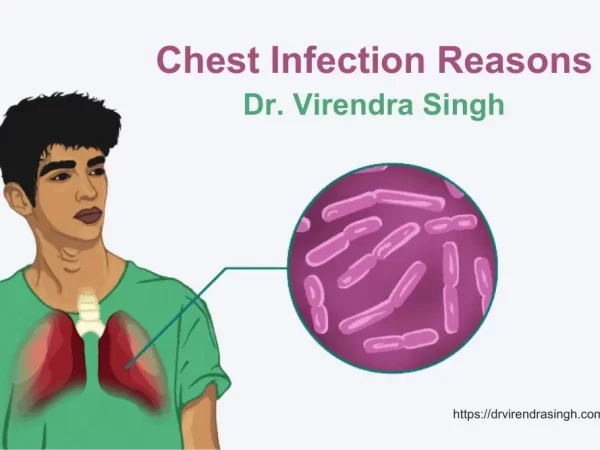
A nodule is a cluster of abnormal cells or a growth of abnormal tissues. It can develop inside internal organs of the body such as the lungs. Rarely cancerous, these growths can be present inside the lungs for a long time without showing any symptoms or common symptoms that might go unnoticed. Nodules can be a result of previous or ongoing infections that cause respiratory illnesses. Dr. Virendra Singh further explains, what is lung nodules, these nodules can be one to several and can be present in one or both lungs. Mostly, their presence is detected accidentally as they may not show peculiar signs of their presence.
What is lung nodules: Causes, diagnosis, and treatment- Dr. Virendra Singh
Pulmonary nodules might occur due to an old or current infection that can cause inflammation in the lung tissues. Possible causes of the formation of nodules in the lungs might vary depending upon the growth of cells inside the body of an individual.
Causes:
Dr. Virendra explains nodules can be cancerous and non-cancerous. Usually, nodules are non-cancerous in most adults. Most of the adults, undergoing such imaging tests reflect a few nodules in their lungs. only the neoplastic growth inside the lungs can cause the formation of cancerous nodules. Also, not all cancerous nodules spread in the body. Mostly they are benign, in almost 95% of the cases. Malignant nodules can result in lung cancer.
Different types of clumps can occur inside an individual. Granulomas result from an infection or illness and can calcify over time, resulting in non-cancerous lung nodules. Neoplastic growth in the lungs can result in cancer and carcinoid tumors.
Other causes include:
- Scarring of lung tissues due to any infection or illness.
- Pollutants or allergens that enter the respiratory tract.
- Autoimmune disorders such as Rheumatoid arthritis.
- Underlying infections such as Pneumonia and Tuberculosis.
Symptoms:
Small nodules usually go unnoticed as they rarely cause any symptoms. You might cough or wheeze or experience shortness of breath.
When the nodules start building up pressure against the airways, symptoms such as the following begin to appear. Visit a pulmonologist if you begin to experience:
- Chest pain
- Blood in sputum and chronic coughing
- Dyspnea
- Wheezing sound
- Fatigue
- less appetite
- recurring infections such as Pneumonia or bronchitis.
Diagnosis:
Most people find out about nodule formation in the lungs by accident. Imaging tests such as X-Ray or CT scans can detect the presence of nodules. If, they are detected specialist might advise you to active surveillance. It is most likely for the benefit of the patient so that these nodules might not turn into cancer or are not cancerous, to begin with.
If the size of the nodule is larger, i.e., more than 12mm, they are considered as ‘masses’, which require further investigations such as Bronchoscopy, biopsy, or PET (Positron emission tomography) scan. Such masses are riskier than normal nodules as they can be cancerous.
Treatment:
- Small nodules can be treated with medicines such as antibiotics.
- If the nodules are larger and are cancerous you might need surgery. Procedures to remove large non-cancerous nodules include VATS or Thoracotomy. Such techniques are used to prevent further damage to the respiratory system and prevent cancer formation.
Dr. Virendra suggests that any one of us can get lung nodules but the risk increases with age, if you have a family history of cancer, or with more exposure to smoke and irritants. Visit the specialist in case you experience breathing difficulties to rule out the actual cause and required treatment.
Read this article – What is Pulmonary Edema


